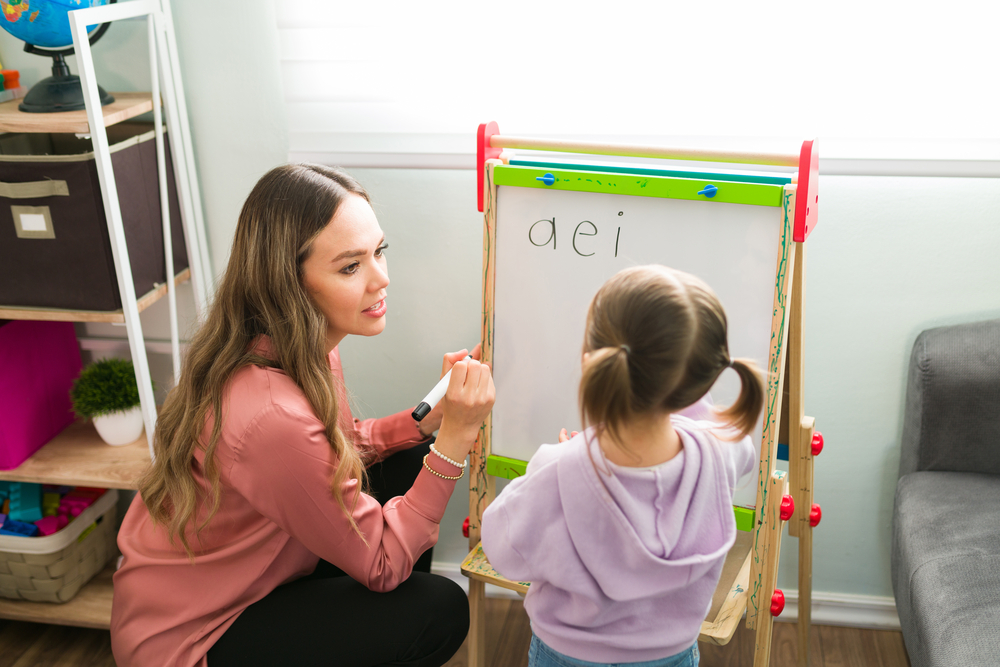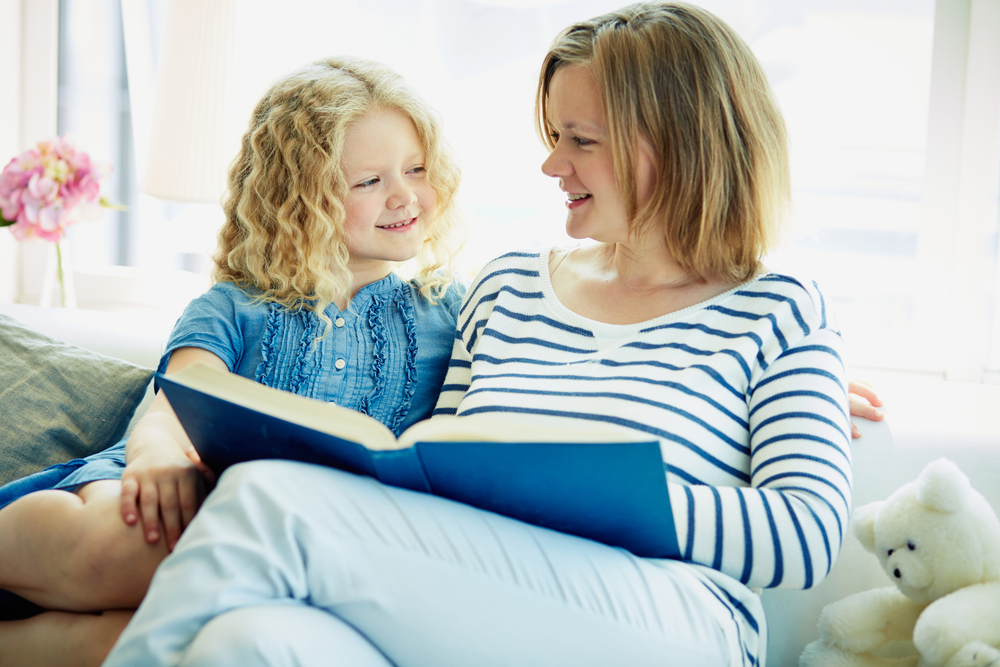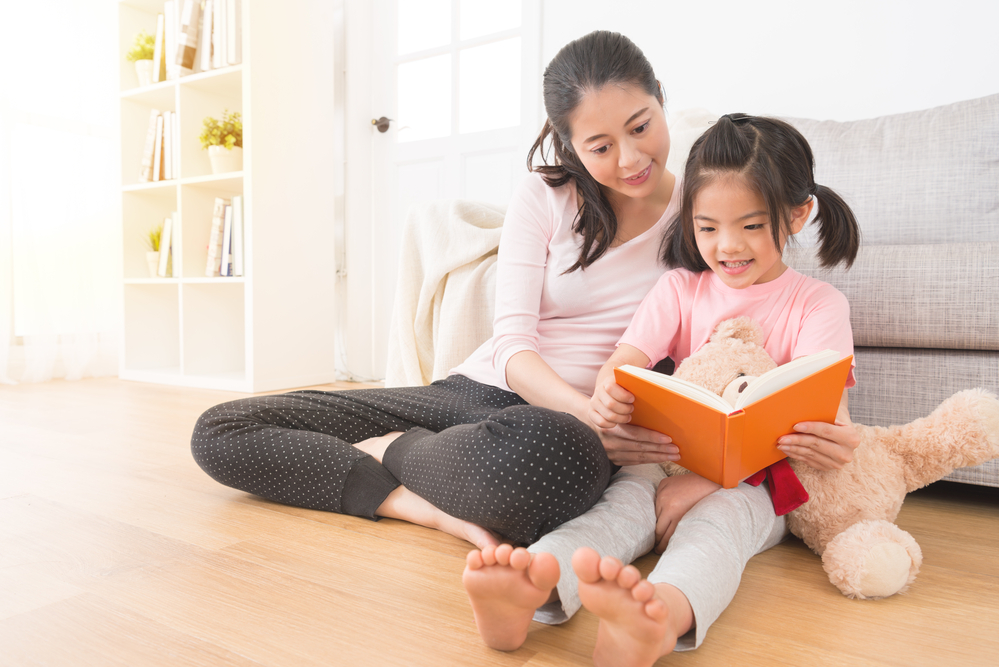We’re well into the digital age, and there are now so many ways to meet children’s educational needs. Blended learning is one of them. Because this is still a fairly new concept, you may be wondering what exactly it is, how it can benefit your child, and what challenges to prepare for.
We’ll answer all these questions and more to help you determine if blended learning is the right route for your child. Let’s get started.
What Is Blended Learning?

Some people describe blended learning as a mixture of different styles of learning, but Oxford Learner’s Dictionaries describes it as “a way of studying a subject that combines being taught in class with the use of different technologies, including learning over the internet.”
Blended learning models come in many different forms, and you can adopt various approaches to find a model that suits you and your child’s needs. We’ll discuss these in more detail below.
1) Rotational Model
This option allows students to rotate across different learning plans on a fixed schedule, with one of these plans being online learning. Children can rotate between online education, a full class, a small group, or individual tutoring.
The rotational model has four different variations:
Station Rotation
Kids rotate through different stations on a specific schedule, with one of these “stations” being online learning.
Lab Rotation
This is similar to station rotation, where children rotate on a fixed schedule. The main difference is that online learning occurs at a specific computer lab.
Individual Rotation
As the name suggests, this option allows kids to rotate stations based on their schedules, not based on the group.
Flipped Classroom
This allows kids to learn online with their home as their classroom. They then go to a traditional brick-and-mortar school for projects or teacher-guided practice.
2) Flex Model
A significant part of the flex model is online learning. However, students can still supplement online learning with face-to-face, traditional education.
The flex model allows kids to have more control over their learning schedules because they get their course curriculum through the internet and access teachers on an as-needed basis. It’s also incredibly individualized.
3) Enriched Virtual Model
This option allows children to complete most of their coursework online and only receive face-to-face instruction when required. This model usually doesn’t involve daily attendance.
Most enriched virtual models began with full-time online schooling. Then, over time, they developed into blended learning to help kids get the face-to-face schooling experiences necessary for some school projects.
4) A La Carte Model
This model allows kids to take an online course in addition to their in-person schooling. It can be an excellent option for students to get more learning opportunities or gain access to courses their school may not offer.
The essence of any blended learning model is to combine the best of two different learning styles:
- Traditional education, where children are in a classroom and receive learning material face-to-face
- Modern eLearning, where children access learning material remotely through the internet and online applications
In this article, we’ll focus on a blended learning approach that encompasses part in-person and part online classes.
Benefits Of Blended Learning
As you can see from the different models above, there are multiple forms that blended learning can take. But why is a shift away from traditional in-person learning beneficial? Let’s explore this below.
Offers Flexibility
One of the biggest benefits of blended learning is its flexibility for both teachers and students. Teachers get to decide how they’d like to teach learning material and, depending on the type of model, children can access the course material from anywhere, at their convenience.
Caters To Different Learners
Blended learning is also great for different types of learners. Children are unique and retain information differently. Some are visual. Others are auditory. Some kids may be kinesthetic, while others learn best by reading and writing.
Because of these different learning styles, kids should be able to learn in the way that best suits them. That’s why blended learning meets the needs of all types of learners.
Keeps Students Engaged And Stimulated
Working in the same place, doing the same thing, looking at the same views every day can make it challenging to stay engaged.
Children have short attention spans, so imagine how difficult it may be for them to do their schoolwork in the same place day in and day out with the same scenery.
Blended learning allows schooling to happen in different environments. And this change of pace and location can keep children engaged and stimulated.
Allows Kids To Work At Their Own Pace
We’ve discussed how unique children’s learning styles can be. But it’s also important to note that every classroom or grade will include kids with different strengths and weaknesses.
Depending on the blended learning model, children can retain the information they need without constantly comparing themselves to their peers.
Challenges Of Blended Learning

Firstly, technology can be an issue for both students and teachers. Since a significant portion of a blended learning school year is spent learning via online channels, it’s essential that everyone involved has the right equipment and knows how to use it.
Technology-assisted learning is only as good as the technology itself and the teacher’s implementation of that technology.
Additionally, it can be challenging to keep a child’s full attention with remote learning. In a traditional brick-and-mortar classroom environment, it’s easier for teachers to see what every student is up to and if they are following along. Not so with a remote classroom.
Children can also struggle to find a quiet space to work at home, especially if they’re not the only kid around. If you work from home (or you’ve ever tried it before), then you know exactly what we’re talking about!
In addition, remote learning can be very passive. It requires children to sit in front of their computers and retrieve course materials themselves. Some subjects, like math, require more active participation to grasp, so this can prove difficult for kids.
Other blended learning challenges include:
- Lack of student-teacher relationships due to low interactions in the classroom
- Limited collaboration between students
- Limited social interactions between students
Understanding these potential pitfalls beforehand can help you implement strategies to make the most of your child’s educational experience.
If you’re interested in introducing your child to a blended learning program, here are some tips to get you started.
Tips For Getting Started
1) Create A Workspace

One of the first steps to take when shifting to a blended education is to create a workspace at home. Ideally, you want this to be in a quiet spot (i.e., your child’s room) where younger siblings can’t just barge in.
You’ll also want the room to have access to natural lighting. Sunlight provides benefits such as improved focus, better sleep, and helping our bodies to produce Vitamin D.
In addition to basic items like a table, chair, computer, paper, etc., you’ll also want to eliminate any potential distractions around (e.g., TV and phone) so your child can focus on their schoolwork while in this space.
2) Get The Technology You Need
As highlighted above, technology is essential to blended learning. So, before getting started, ensure that your home internet service is fast enough to avoid buffering or delays while your child attends school online.
You’ll also need to consider the platform you will use to deliver the content to your child. To determine this, reach out to your child’s school or program you’re using to see what specific hardware or software they recommend for things to run smoothly.
3) Familiarize Your Child With The Tech

Make sure to spend some time familiarizing your child with the technology they’ll be using. This is usually their favorite part, and you’ll want to ensure that they know where to click if they wish to speak or mute themselves during class, how to access course material and save it, etc.
Children tend to be very tech-savvy (or at least pick up new technology quickly), so you’ll probably just have to show them just a few times before they can do everything by themselves.
4) Make Time To Play Outside
Getting some fresh air and sunlight is important for your child’s development. Playing outside allows children to accumulate healthy amounts of Vitamin D in their bodies, strengthen their bones and muscles, and burn off energy.
If your young learner is partly schooling at home, encourage them to go play outside during their breaks so that they can reap some of these benefits.
5) Adjust As You Go
While you can prepare yourself and your child, you never really know how things will be until the blended learning journey begins. For example, there might be Wi-Fi issues or home distractions, or the spot you picked for them may not be ideal.
Also, new things can be overwhelming for children (and adults), so be patient with your child and yourself. Pay attention to the challenges, and be flexible and open to the idea that you may need to change a few things along the way.
The Future Of Schooling, Today

Blended learning is one of the most exciting developments of our time. It combines the benefits of two environments (face-to-face and eLearning) and caters to different types of learners and their needs.
While there may be challenges in incorporating this approach to learning at home, with a solid plan, you can implement an educational strategy that allows your child to flourish.
Check out our Learn & Grow app for more exciting ways to foster a lifelong love for learning in your child.











